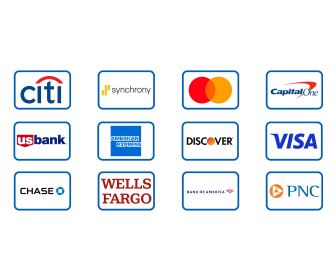How to Use Your Credit Card for Everyday Purchases
Credit cards aren’t just for emergencies or big-ticket items — they can be powerful tools for everyday spending when used correctly. From groceries and streaming subscriptions to gas and utilities, your card can earn rewards, build credit, and provide extra protection. Here’s how to use your credit card for daily purchases without falling into debt.
1. Treat It Like Cash — Not Extra Money
The golden rule of responsible credit use is simple: only spend what you can pay off in full each month. Using a credit card doesn’t increase your budget; it just delays the payment. Think of it as a smarter way to manage transactions, not an excuse to overspend.
- Use your card for planned purchases only.
- Set up alerts to track spending in real time.
- Pay off your balance before interest applies.
2. Use It for Bills and Recurring Payments
Automating recurring expenses through your credit card makes life easier — and earns you consistent rewards. Many people pay utilities, subscriptions, and phone bills this way to collect points or cash back effortlessly.
- Link your card to streaming services, gym memberships, or insurance premiums.
- Use autopay to avoid missing payment due dates.
- Review your statement monthly to catch unwanted charges or price increases.
3. Maximize Rewards on Everyday Categories
Many cards offer extra cash back or points on categories like dining, groceries, and gas. Matching your daily spending to your card’s reward structure can earn you hundreds of dollars in value each year.
- Grocery cards: Earn up to 6% cash back at supermarkets.
- Dining cards: Get 3–4x points at restaurants and cafes.
- Flat-rate cards: Simple 2% cash back on everything, no tracking needed.
4. Take Advantage of Purchase Protection
Most credit cards include built-in protections that debit cards don’t — such as purchase protection, extended warranties, and fraud safeguards. Using your card for electronics, furniture, or travel can save you money and stress later on.
- Purchase protection: Covers theft or damage shortly after purchase.
- Extended warranty: Adds up to a year to manufacturer warranties.
- Fraud coverage: You’re not liable for unauthorized charges if reported promptly.
5. Pay on Time and in Full
Paying your bill on time every month is the single most important factor for maintaining good credit. Paying in full avoids interest entirely, no matter your card’s APR. Setting up automatic payments ensures you never miss a due date.
- Enable autopay for the full balance each month.
- Make an extra mid-cycle payment if you spend heavily.
- Monitor your due dates and statement cycles regularly.
6. Track and Adjust Your Spending
Credit cards provide detailed statements and spending breakdowns that can help you budget more effectively. Use those insights to identify habits, track inflation, and plan your future expenses.
- Review your statements every month.
- Look for recurring purchases that no longer add value.
- Use budgeting apps or your card’s dashboard to visualize spending patterns.
Expert insight: The smartest card users treat their credit cards like debit cards with benefits — paying in full, every time, while collecting rewards and protection along the way. The result is convenience, savings, and stronger credit over time.
Final Thoughts
Using your credit card for everyday purchases is smart — as long as you stay disciplined. When managed properly, it helps build credit, earn rewards, and protect your purchases. The key is balance: spend normally, pay fully, and let your card work for you, not against you.
Not financial advice. Rewards, rates, and benefits vary by issuer. Always confirm current terms before applying or using any credit product.



